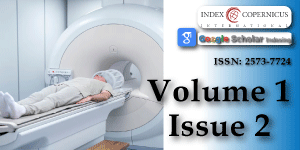Time to Terminate LNT: Radiation Regulators Should Adopt LT
Main Article Content
Abstract
The linear no-threshold hypothesis (LNT)-the basis of radiation regulatory policy-extrapolates from observed high-dose harm to assumed low-dose harm, entailing that all ionizing radiation is harmful, by denying any biological response to damage and asserting cumulative lifetime harm, regardless of dose or dose rate. All aspects of LNT are demonstrably false. There are evolved biological responses that repair or remove radiogenic damage from low doses and dose rates, thereby averting acute harm and precluding the alleged cumulative damage. LNT and its offspring, the “as low as reasonably achievable” principle, do not err on the side of caution; neither is truly conservative. The public needs protection from radiophobia, rather than from low-dose radiation exposure. Neither radiation regulations nor medical practice should be based on LNT, but rather, at least as a first step, on a linear (down to a) threshold (LT) model.
Article Details
Copyright (c) 2017 Siegel JA, et al.

This work is licensed under a Creative Commons Attribution 4.0 International License.
Siegel JA, Welsh JS. Does imaging technology cause cancer? Debunking the linear no-threshold model of radiation carcinogenesis. Technol Cancer Res Treat. 2016; 15: 249-256. Ref.: https://goo.gl/HXiFzN
Siegel JA, Pennington CW, Sacks B. Subjecting radiological imaging to the linear no-threshold hypothesis: a non sequitur of non-trivial proportion. J Nucl Med. 2017; 58: 1-6. Ref.: https://goo.gl/UEzLJ2
Sacks B, Meyerson G, Siegel JA. Epidemiology without biology: false paradigms, unfounded assumptions, and specious statistics in radiation science (with commentaries by Inge Schmitz-Feuerhake and Christopher Busby and a reply by the authors). Biol Theory. 2016; 11: 69-101. Ref.: https://goo.gl/JyntJf
Siegel JA, Sacks B, Stabin MG. LNT 999. Health Physics News. 2015; 23-24.
The Japan Times. Fukushima stress deaths top 3/11 toll. 2014.
United Nations and International Atomic Energy Agency. Chernobyl Forum: Chernobyl’s Legacy: Health, Environmental and Socio-Economic Impacts and Recommendations to the Governments of Belarus. The Russian Federation and Ukraine. 2006; 2003-2005. Ref.: https://goo.gl/Jcyz8H
Bennett B, Repacholi M, Carr Z. World Health Organization (WHO). Health Effects of the Chernobyl Accident and Special Care Programmes. Report of the UN Chernobyl Forum Expert Group “Health.” Ed: WHO Press, World Health Organization, Geneva, Switzerland. 2006.
United Nations Information Service. No Immediate Health Risks from Fukushima Nuclear Accident Says UN Expert Science Panel. 2013. Ref.: https://goo.gl/iKgKZc
Siegel JA, Marcus CS, Welsh JS, Pennington CW, Stabin MG. Regulatory application of the LNT hypothesis and ALARA to protect radiosensitive people is misguided. Health Phys News. 2016; 23-24.
Mitchel RE. The dose window for radiation-induced protective adaptive responses. Dose-Response 2009; 8:192-208. Ref.: https://goo.gl/sroLFz
Little MP, Wakeford R, Tawn EJ, Bouffler SD, de Gonzalez AB. Risks associated with low doses and low dose rates of ionizing radiation: why linearity may be (almost) the best we can do. Radiology. 2009; 251: 6-12. Ref.: https://goo.gl/Xft1nN
Little MP. Ionising radiation in the workplace. BMJ. 2015; 351. Ref.: https://goo.gl/426YRP
Luckey TD. Radiation Hormesis. Boca Raton. 1991. Ref.: https://goo.gl/kHAxtT
Aurengo A, Averbeck D, Bonnin A. Dose-effect Relationships and Estimation of the Carcinogenic Effects of Low Doses of Ionizing Radiation. Paris: Académie des Sciences-Académie nationale de Médecine; 2005.
Feinendegen LE, Pollycove M, Neumann RD. Low-dose cancer risk modeling must recognize up-regulation of protection. Dose-Response. 2009; 8: 227-252. Ref.: https://goo.gl/HUWd6v
Siegel JA, Pennington CW, Sacks B, Welsh JS. The birth of the illegitimate linear no-threshold model: an invalid paradigm for estimating risk following low-dose radiation exposure. Am J Clin Oncol. 2015. Ref.: https://goo.gl/5LgGTD
Löbrich M, Rief N, Kühne M, Heckmann M, Fleckenstein J, et al. In vivo formation and repair of DNA double strand breaks after computed tomography examinations. Proc Natl Acad Sci USA. 2005; 102: 8984-8989. Ref.: https://goo.gl/scZEvt
Vandevoorde C, Franck C, Bacher K, Breysem L, Smet MH, et al. γ-H2AX foci as in vivo effect biomarker in children emphasize the importance to minimize X-ray doses in paediatric CT imaging. Eur Radiol. 2015; 25: 800-811. Ref.: https://goo.gl/Ny3MmR
Halm BM, Franke AA, Lai JF, Turner HC, Brenner DJ, et al. γ-H2AX foci are increased in lymphocytes in vivo in young children 1 h after very low-dose X-irradiation: a pilot study. Pediatr Radiol. 2014; 44: 1310-1317. Ref.: https://goo.gl/28NS2W

